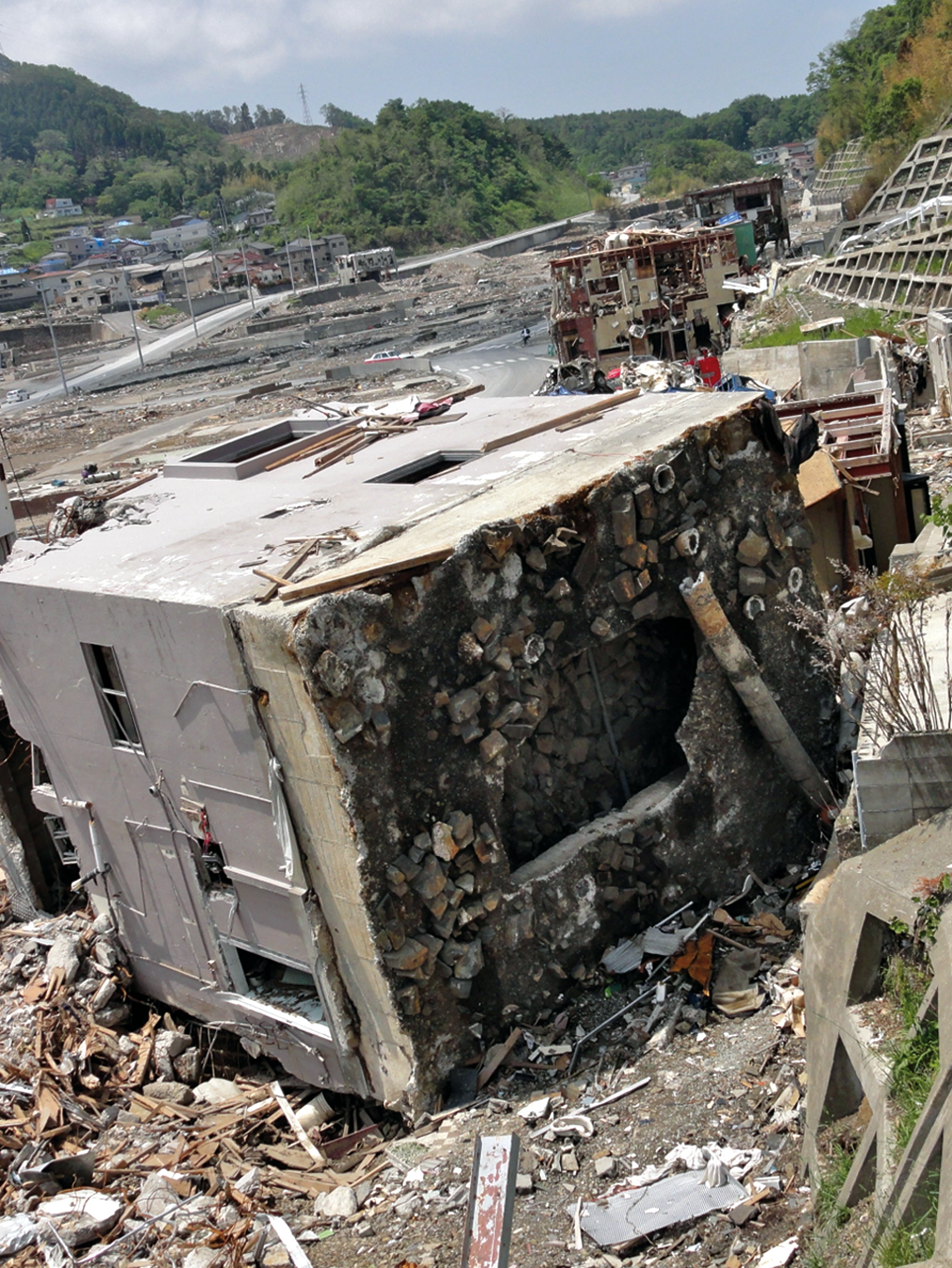Browse the glossary using this index
Special | A | B | C | D | E | F | G | H | I | J | K | L | M | N | O | P | Q | R | S | T | U | V | W | X | Y | Z | ALL
L |
|---|
Local tsunamiA tsunami from a nearby source for which its destructive effects are confined to coasts less than 1 hour tsunami travel time, or typically within about 200 km from its source. A local tsunami is usually generated by an earthquake, but can also be caused by a landslide or a pyroclastic flow from a volcanic eruption. Over history, 90% of tsunami casualties have been caused by local tsunamis.
Tsunami flow depths exceeding 10 m and flow velocities over
6 m/s overturned and dragged 3-story buildings as much as
50 m during the 11 March 2011 Japan tsunami. Onagawa, Japan.
Photo courtesy of ITIC. | |
Low waterThe lowest water level reached during a tide cycle. The accepted popular term is low tide. | |

